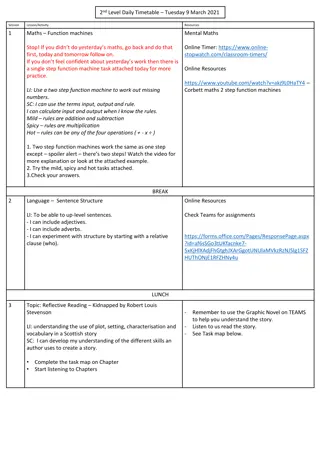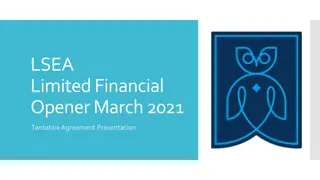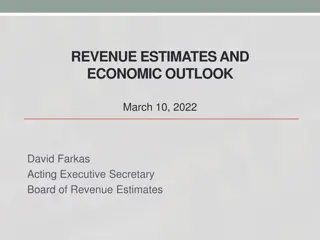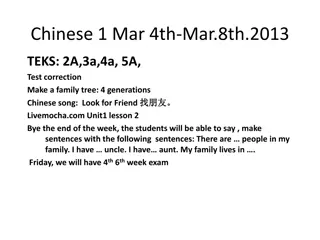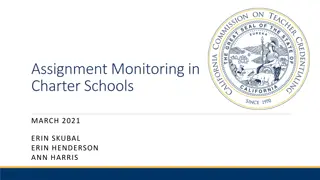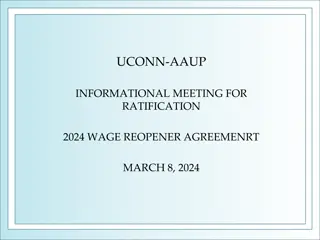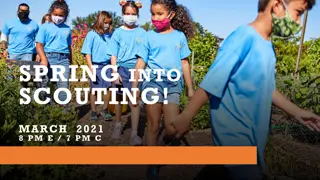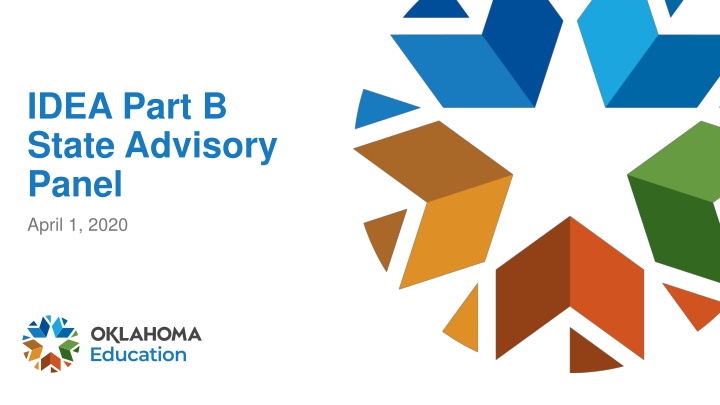
State Advisory Panel Meeting Highlights and Priorities for Special Education
Discover the key discussions and priorities addressed at the IDEA Part B State Advisory Panel meetings, focusing on virtual learning, COVID-19 impact, equity in curriculum access, and safe learning environments. Explore initiatives for special education micro-credentialing and grant applications for Individuals with Disabilities Education Act (IDEA) funding.
Download Presentation

Please find below an Image/Link to download the presentation.
The content on the website is provided AS IS for your information and personal use only. It may not be sold, licensed, or shared on other websites without obtaining consent from the author. If you encounter any issues during the download, it is possible that the publisher has removed the file from their server.
You are allowed to download the files provided on this website for personal or commercial use, subject to the condition that they are used lawfully. All files are the property of their respective owners.
The content on the website is provided AS IS for your information and personal use only. It may not be sold, licensed, or shared on other websites without obtaining consent from the author.
E N D
Presentation Transcript
IDEA Part B State Advisory Panel April 1, 2020
AGENDA Welcome Linda Jaco State of Special Education Todd Loftin OJA Charters Sonya Parsons COVID-19 Research on Academic Achievement and Increased Accessibility Dr. Penny Cantley Small and Large Group Discussion Closing 2 IDEA B State Advisory Panel Meeting 4/1/20
Panel Priorities for 2020-2021 3 IDEA B State Advisory Panel Meeting 6/11/20
Panel Priorities Main Priority - virtual learning for students with disabilities. Focusing on evidence-based virtual learning practices will allow the panel to address four priorities panel members identified in the survey completed during September/October. Those priorities include: 1. Virtual Learning (curriculum, assessments, what works, access to resources) 2. COVID-19 (academic achievement and Increased accessibility) 3. Equity in Accessing Curriculum (general education and curriculum support for special education teachers) 4. Safe and Healthy Learning Environments Focusing on these four priorities will also help address the need for accessible curriculum for students receiving services in alternative placements including juvenile correction facilities. Panel recommendations will be based on learner needs and outcomes, accessibility, deliverability, and effective instruction. 4 Presentation Title
State of Special Education 5 IDEA B State Advisory Panel Meeting 6/11/20
OSDE Recovery Efforts OSDE Recovery Efforts Focused on helping schools determine how to support students through the use of additional funding. Recent Bill: 20% have to be used to support students with learning loss other funds are used for pandemic related issues. 6 Presentation Title
Special Education Micro-credential for Severe/Profound certification Further guidance on compensatory/recovery services 7 Presentation Title
IDEA Part B Grant Application 8 IDEA B State Advisory Panel Meeting 4/1/20
Grant Application Public Notice Submissions of The Individuals with Disabilities Education Act (IDEA) Parts B and C as amended in 2004, Grant Application FFY21 Part B Application FFY21 Part C Application Part B Interactive Spreadsheet FFY2020 9 IDEA B State Advisory Panel Meeting 4/1/20
Grant Application FFY20 (FFY21 is not yet available) Total Award - $161,932,580 (FFY19 - $156,655,705) Administration- $3,160,276 Other State Level Activities - $17,613,184 Includes 2.5 million for High Needs Fund Preschool - $3,838,038 (FFY19 - $3,799,278) 10 IDEA B State Advisory Panel Meeting 4/1/20
Panel Priorities for 2020-2021 11 IDEA B State Advisory Panel Meeting 6/11/20
Panel Priorities Main Priority - virtual learning for students with disabilities. Focusing on evidence-based virtual learning practices will allow the panel to address four priorities panel members identified in the survey completed during September/October. Those priorities include: 1. Virtual Learning (curriculum, assessments, what works, access to resources) 2. COVID-19 (academic achievement and Increased accessibility) 3. Equity in Accessing Curriculum (general education and curriculum support for special education teachers) 4. Safe and Healthy Learning Environments Focusing on these four priorities will also help address the need for accessible curriculum for students receiving services in alternative placements including juvenile correction facilities. Panel recommendations will be based on learner needs and outcomes, accessibility, deliverability, and effective instruction. 12 Presentation Title
COVID-19 (academic achievement and accessibility) Variable impacts across students, teachers, families, schools and districts Amount of time spent in a classroom with peers in a virtual learning environment (asynchronous vs synchronous) out of school (virtual and classroom) 13 Presentation Title
COVID-19 (academic achievement and accessibility) Student ability and resources to access instruction (virtual and in-person) Teacher resources, materials and support necessary for effective teaching (virtual and in-person) Family/Caretaker time, resources, and ability to provide intentional instruction in the home How can schools address the achievement gap? 14 Presentation Title
Pandemic Relevant Research Online learning (teachers and students) Home schooling Reduced learning time Chronic absenteeism Remote learning Recessions, natural disasters, and pandemics on learning Summer learning (loss or gain) 15
Opportunity Gaps Gaps in access to the conditions and resources that enhance learning and development. food and nutrition housing health insurance and care financial relief measures internet access electronic devices 16
Consequences Interrupted and disrupted Planning and instruction Learning and development Address the gaps caused or exacerbated by the pandemic 17
Moving Forward Translate what we have learned into a plan Address achievement and opportunity gaps Address accessibility issues 18
Activity: Small Group Discussion List 1-3 examples Student experiences during the pandemic Access to learning Academic achievement Educator experiences during the pandemic Ability to provide effective instruction to students Access to necessary materials and technology Family/Caregivers experiences during the pandemic Ability to provide intentional instruction in the home Access to necessary materials and technology What worked well during the pandemic Teachers and/or schools Students Family/Caregivers List 1-3 Services, supports, activities, interventions, etc that schools could provide to help fill the pandemic learning gap. 19


